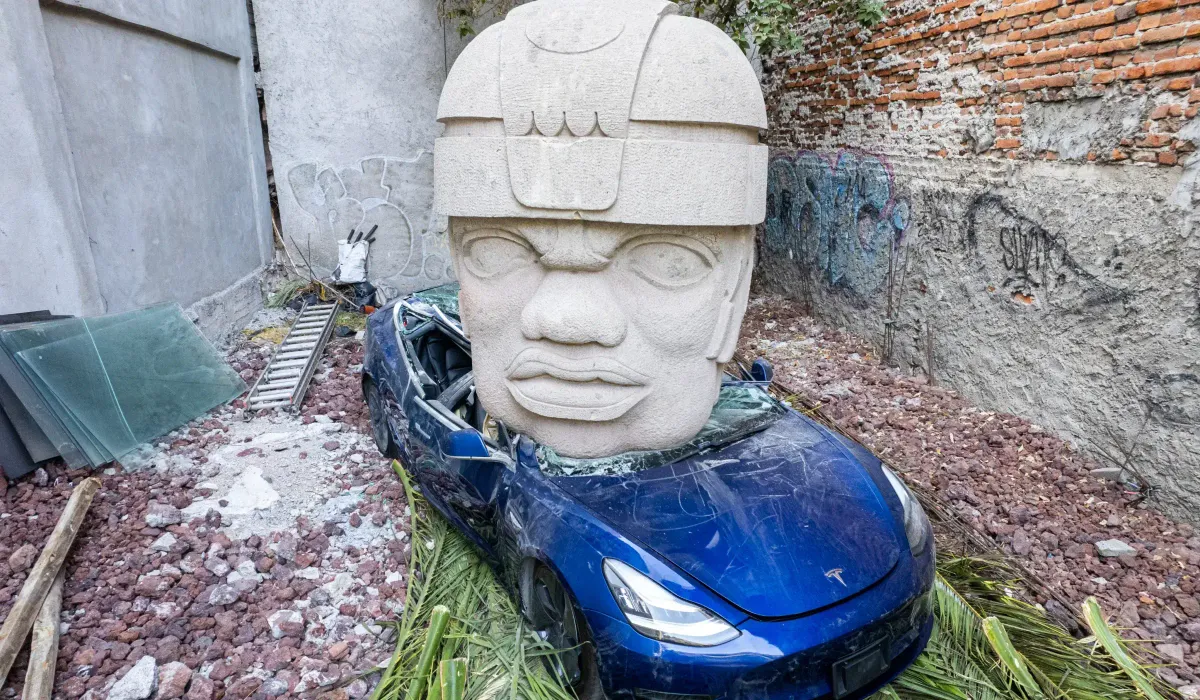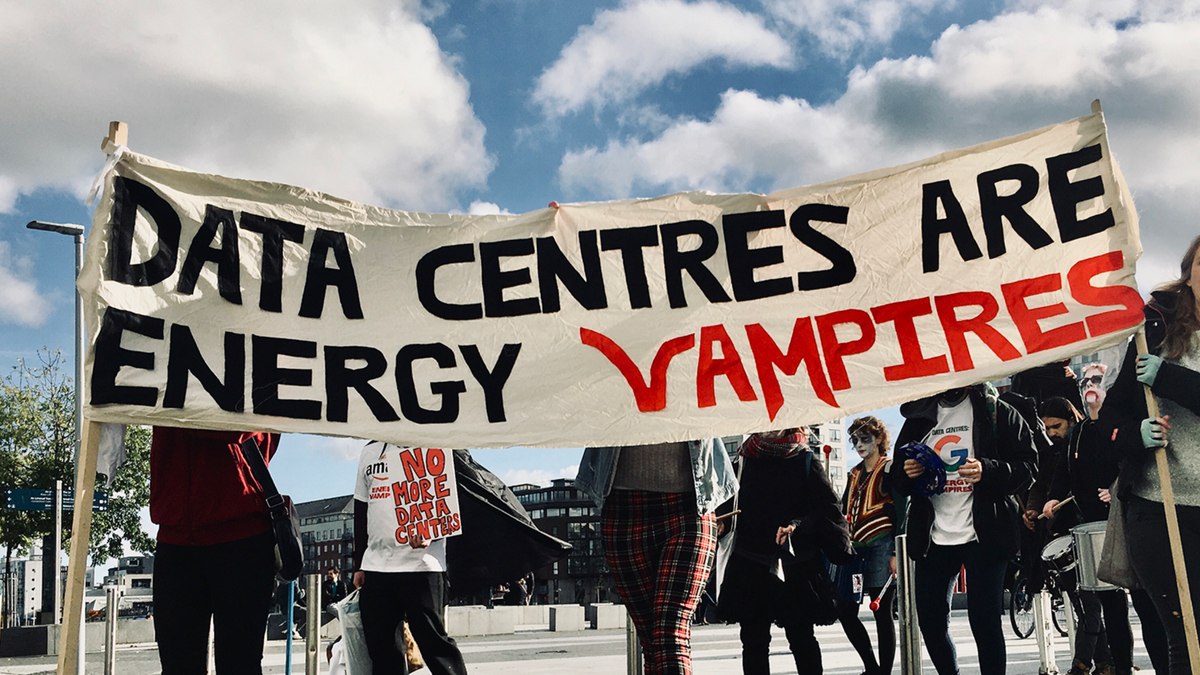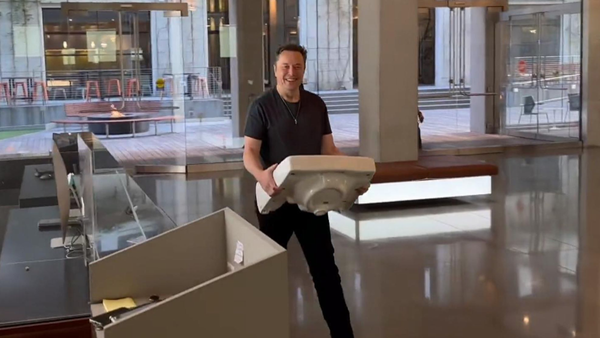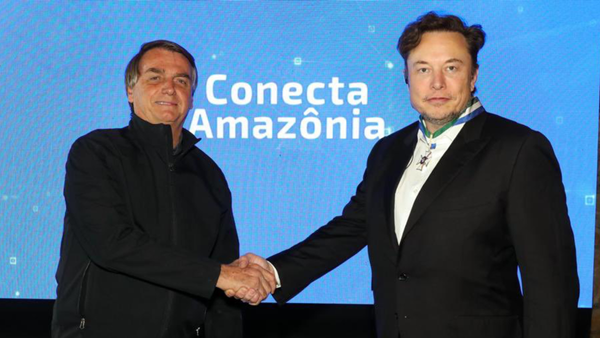Roundup: Smashing Teslas with stone heads
Read for a roundup of recent critical work on data centers and the resource demands of AI

The TikTok discourse is rearing its head again and I’m already exhausted by it, but at least it’s an opportunity to look once again at US hypocrisy, as I explained in the newsletter this week. I wasn’t expecting to write up a long post about TikTok and how the expansion of US tech also helped the US increase its own geopolitical clout, so you can also read the more personal post I wrote about physical media and why we shouldn’t want it to be eradicated by the shift to streaming.
In this week’s issue, I dig into some updates on the data center front after writing about it last month. I’m happy to see more media organizations shedding light on the material cost of AI. You can also scroll to the end for some more information on the photo of the big stone head crushing a Tesla — it’s a nice story!
Over on Tech Won’t Save Us, I caught up with Ed Zitron to dig into the many, many ways Silicon Valley is failing us and why people are right to be angry about it. The innovation has stalled, and instead they’re just making everything worse as they try to make as much money as possible.
Anyway, enjoy the roundup and have a great week!
— Paris
The data center fight continues
In early February, I interviewed Sebastián Lehuedé about a community that fought to block a Google data center in Santiago, Chile, then followed up with a longer commentary about the major resource footprint of the data centers that AI hype depends on and why we need to be paying more critical attention to them.

I’m not claiming any direct influence, but I’ve definitely noticed the media’s attention on that aspect of the AI story has picked up. Just in the media I follow, I’ve seen the Financial Times, the New Yorker, The Atlantic, and Bloomberg publish notable stories about the water and energy use of data centers, along with their growing environmental toll. I’m sure they’re not the only ones, and it’s important they’re doing this work because the fight isn’t over.
In my piece, I noted a number of countries where opposition to data centers is growing. After it was published, the New Zealand magazine North & South, whose story I referenced in the article, even reached out about republishing it in their April issue. Around that same time, experts in the Nordic countries were also gathering in Stockholm to discuss the problem posed by these major data center developments in their countries.
“If China remains the place of cheap labor for Silicon Valley innovations, the Nordic countries are today the source of cheap land and cheap renewable electricity for machines needed to produce the new business of Sillicon Valley around data processing and AI,” wrote Linköpings University associate professor Julia Velkova. In her roundup of the meeting, she explained how the high energy demands of Microsoft in Malmö, Sweden meant a bread factory had to be built elsewhere, while Amazon Web Services is responsible for crowding out businesses in the Swedish town of Sörmland. Meanwhile, they’re also building new fossil fuel infrastructure, like AWS’s planned 600 MW diesel generator in Katrineholm, and as in the Chilean case, the companies are not open about their business practices and do not communicate with researchers or the public.
Anthropologist Steven Gonzalez Monserrate has a new report out illustrating why this is so important. “The Cloud now has a greater carbon footprint than the airline industry,” he writes. “A single data center can consume the equivalent electricity of 50,000 homes.” He discusses the energy and water use of data centers, along with the some of the community impacts from noise pollution and the broader issue of e-waste from all the computer hardware that filters in and out of those warehouses of computing. As I argued in my piece last month, understanding the material impact of data centers forces us to consider whether it makes to be using this much computer in the first place.
Recommended reads
- Historian Margaret O’Mara has a new piece in Project Syndicate comparing the AI boom in Silicon Valley to what was happening 30 years ago as the dot-com explosion shook off the dread of a recession. While not predicting where things might go, she notes one key difference: “Whereas the internet era fundamentally disrupted the technology industry, the AI boom is making Big Tech stronger than ever.”
- Apple and Tesla are struggling in China. In Rest of World, Russell Brandom explains it’s pretty simple why: they underestimated their Chinese competitors. Huawei has become “the hip brand for young people,” displacing Apple, while Nio has “developed a cult following that’s remarkably similar to Tesla’s rabid U.S. fan base.”
- Interesting numbers from a new report on AI trust: Only 35% of Americans trust AI companies, down from 50% five years ago. Plus, those surveyed in France, Canada, Ireland, UK, U.S., Germany, Australia, the Netherlands, and Sweden “reject the growing use of AI by a three-to-one margin.”
Labor updates
- IATSE, the union representing film industry craft workers, and Hollywood studios are negotiating specific issues of interest to cinematographers, editors, and other crafts next week.
- The European Union has adopted a heavily watered down version of the Platform Work Directive that likely won’t make a significant difference for gig workers.
- Uber is creating a yellow union in Australia to try to halt progress toward better wages and working conditions for drivers.
I’m almost happy there aren’t many labor updates this week, because recently they’ve often been layoff roundups.
In other news
- A new report in AdWeek suggests publishers could see “potential declines ranging from 20% to 60%” in organic search traffic as Google rolls out generative AI tools.
- Last year, two men with reported ties to the Indian government assassinated a Canadian citizen on Canadian soil who had ties to a Sikh separatist group. YouTube just removed a report by Canada’s public broadcaster the CBC about the killing after it was demanded by the Indian government.
- India is moving forward with AI regulations ahead of parliamentary elections next month after a right-wing backlash to Google’s Gemini (rightfully) identifying prime minister Narendra Modi as a fascist.
- Bloomberg did a quick breakdown of the US, EU, and Chinese approaches to AI regulation.
- Elon Musk canceled Don Lemon’s show on X/Twitter before it even released its first episode because Musk didn’t like the questions Lemon asked him in an interview.
- Musk shared a video accusing Haitians of engaging in cannibalism this week that was later taken down for violating X/Twitter’s (very lax) rules.
- Tesla, Netflix, and Salesforce are among the major US companies that paid more to their CEOs between 2018 and 2022 than they paid in taxes.
- Tesla isn’t likely to have another big growth phase until at least 2027, according to an Evercore analyst.
- Tesla is also headed back to court next week over a case where Autopilot was responsible for the death of Apple engineer Walter Huang in 2018. Lawyers on the plaintiffs’ side have emails showing Tesla knew people weren’t paying attention to the road while using the system.
- PornHub is blocking access to its websites in Texas in response to a new age verification law.
- At least three undersea cables off the western coast of Africa have been damaged, disrupting internet services in eight countries.
- Uber and Lyft are pulling out of Minneapolis is response to new minimum pay rules for drivers.
- Kickstarter’s big bet on the blockchain in 2021 was spurred by an undisclosed $100 million investment by Andreessen Horowitz.
- China is urging local EV companies to buy chips made in China in response to US restrictions.
- An Amazon chatbot has been recommending Nazi books and lying about its working conditions.
One more thing
You’ve already seen the image at the top of the article, but why did artist Chavis Mármol crush a Tesla under a replica of a giant Olmec head? In a video posted to Instagram by the hotel that commissioned the world, he describes wanting to contrast the “mother culture” against one of the most controversial companies and businessmen in the world.
“The Olmec head imposes itself before the technological object, it bursts and crushes it and in the end it is glorified before this object,” says Mármol, “which no matter how technological or how much it is an object of desire, in the end it is just that, just a product of a capitalist system, when in reality what matters is what we came from, what we are, and what we have been generation after generation.”
In a later post, he admitted another goal: “What I was looking for doing with this piece was to troll Elon Musk and his new car plant in Mexico.”






